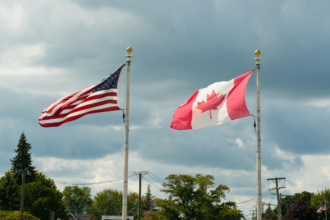Why Did the NDP End the Key Agreement?
The New Democratic Party (NDP) has ended a significant two-and-a-half-year-old agreement with Justin Trudeau’s Liberals, which had been instrumental in keeping the minority government in power. In a video posted on social media, NDP leader Jagmeet Singh announced his decision, criticizing the Liberals for being “too weak, too selfish” to advocate for Canadians effectively.
- Why Did the NDP End the Key Agreement?
- Could an Early Election Be on the Horizon?
- What Was the Background of the Agreement?
- Why Did the NDP Reevaluate and Criticize the Agreement?
- How Did Trudeau Respond to the NDP's Decision?
- How Does the Current Political Landscape Affect the Situation?
- What Is the Conservative Reaction to the NDP's Move?
- How Long Has Trudeau Been in Power?
The agreement, known as a “supply and confidence” deal, involved the NDP supporting the Liberals during confidence votes in Parliament. This deal allowed the Liberals to govern despite lacking a majority while securing NDP support on critical issues.
Could an Early Election Be on the Horizon?
The termination of the agreement does not immediately trigger a federal election, but it raises the possibility that Canadians might head to the polls before the scheduled election in October 2025. In his statement, Mr Singh indicated that a non-confidence vote could be considered with each confidence measure. “The NDP is ready for an election,” Mr Singh declared, suggesting that the party is prepared for potential electoral challenges.
What Was the Background of the Agreement?
The agreement was forged in March 2022, with the Liberals committing to support several NDP priorities in Parliament. Unlike a coalition involving shared power, this deal allowed the Liberals to govern as a minority while receiving assurances of NDP support on confidence votes. In return, the NDP achieved progress on major priorities, including dental benefits for lower-income families and a national pharmacare program covering birth control and insulin. This was the first formal agreement of its kind at the federal level.
Why Did the NDP Reevaluate and Criticize the Agreement?
Until this spring, Mr. Singh and his party had publicly upheld the agreement. However, recent events led the NDP to reassess its position. The NDP’s leadership began reevaluating the deal after Mr Trudeau’s cabinet directed the industrial relations board to impose binding arbitration during a work stoppage by Canada’s two largest railways.
Mr Singh’s decision to end the agreement was characterized by his criticism of the Liberals, stating that they had “let people down” and did not “deserve another chance from Canadians.”
How Did Trudeau Respond to the NDP's Decision?
In response, Mr. Trudeau, speaking at an event in Newfoundland, expressed confidence in his ability to make Parliament work. “I’ll let others focus on politics,” he said, hoping the next election would not occur “until next fall” to allow his government time to advance its agenda.
How Does the Current Political Landscape Affect the Situation?
The decision comes amid growing voter frustration with rising inflation and housing affordability. Polls have shown the Liberals trailing significantly behind the opposition Conservatives, with national surveys indicating the Liberals are about 18 points behind.
What Is the Conservative Reaction to the NDP's Move?
Conservative leader Pierre Poilievre has criticized Mr Singh for not committing to a non-confidence vote, labeling the announcement as a “stunt.” In an open letter, Mr. Poilievre urged Mr. Singh to abandon the agreement with the Liberals. “No one voted for you to keep Trudeau in power. You do not have a mandate to drag out his government another year,” Mr. Poilievre wrote.
How Long Has Trudeau Been in Power?
Justin Trudeau has been serving as Prime Minister since 2015. The Liberals won re-election with a minority government in both 2019 and 2021.
McDonald’s Resumes Quarter Pounder Sales After E. coli Outbreak Investigation Clears Beef Patties








